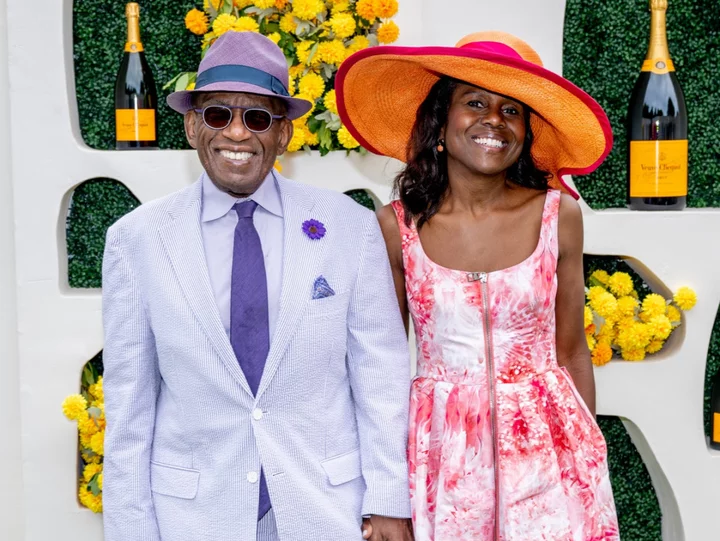
Al Roker shares health update after second knee replacement surgery
Al Roker has undergone his second knee replacement surgery, which had to be delayed after he was admitted to hospital for blood clots in his legs and lungs last December. The Today show weatherman, 68. has been reporting on the weather for the NBC morning show since 1996. Following his surgery, he returned to the programme on Tuesday (30 May). Roker has now said he is feeling “good” after the surgery on 9 May, which comes more than a year after his first knee replacement. He attended the Veuve Clicquot Polo Classic event in New Jersey with his wife Deborah Roberts over the weekend, which he said was his first public outing since the surgery apart from work. Speaking to People, Roker said: “[It’s] nice to be wearing nice clothes. Here we are. You can’t help but feel better.” Roker was rushed to hospital the day after Thanksgiving and remained there for nearly two weeks due to the blood clots. He told his followers on Instagram that he was admitted “with a blood clot in my leg which sent some clots into my lungs”. “After some medical whack-a-mole, I am so fortunate to be getting terrific medical care and on the way to recovery,” he said, thanking fans for their well wishes. In March, Roker said he “wouldn’t be alive” if not for Roberts, 62. He told PageSix: “I guess I know it now. I didn’t know it at the time. Deborah was great at keeping all that away from me so I thought I was doing OK but that was great because I was able to focus on getting better.” Roberts is the presenter’s second wife, who he married in 1995 after splitting from ex-wife Alice Bell the year before. He shares daughter Courtney, 35, with Bell, and two children Leia, 24, and Nick, 20, with Roberts. Read More Jessie J confirms identity of her baby’s father after ‘struggling to keep things private’ Husband of non-smoker, 24, who died two weeks after lung cancer diagnosis reveals single telltale sign How noise complaints became a very British obsession Pharmacist warns against one common hay fever habit 7 tips and tricks for hay fever relief A Place In The Sun’s Jonnie Irwin admitted to hospital amid terminal diagnosis
2023-06-05 14:58
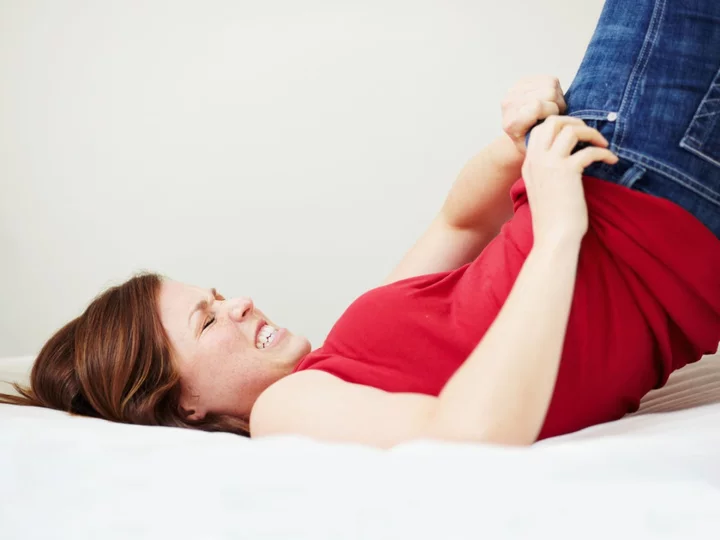
Jeans shopping is still a total nightmare
Taking off yet another pair of jeans that simply wouldn’t fit, I was on the verge of tears. Under the harsh glare of the dressing room lights, my reddening face felt even more humiliating as I shimmied myself back into my own clothes. I had dedicated the day to jeans shopping and started it feeling optimistic, but this was quickly waning. This was the sixth store, and the seventh pair I’d tried on. None of them were happening. I question why I’ve spent hours traipsing around Oxford Street, dodging crowds and trying not to get hit by a black cab. Jeans shopping is not fun. It’s a mission. More than three years ago, I swore off jeans for the foreseeable future. At the time, I was practically living in a pair of faded black M&S high-waist, straight-cut jeans that were cropped right above my ankle. The search for those jeans had also been painful, so when I found this perfect pair, I told myself that was it – I was never going to buy jeans again. But at the start of 2023, I was devastated to find my severe lack of a thigh gap had led to a rather large hole being rubbed into the inner thigh of my beloved jeans. I resolved to get the hole fixed and am still planning to do so, but I recently become enamoured by the idea of blue jeans. It’s been a long time since I owned a pair of blue jeans I really liked. Maybe it was time to start the search again? I initially felt buoyed by the knowledge that size ranges are more extensive than ever before. In the jeans section of Asos alone, you can filter the type of denim you want to unprecedented levels of specificity: choose from 17 different styles, over 30 “jeans families”, dozens of brands, colours, and washes, six “body fits” from Curvy to Petite, and sizes up to UK32. It’s a dizzying array of choices, but surely meant that it’d be easier than ever to find what I was looking for. Yet, this couldn’t be further from the truth for many women, particular those of the larger, curvier variety. I am currently extremely average in size at a UK14. But due to the aforementioned lack of thigh gap, combined with wide hips, a generous posterior and thick, muscly calves, I’ve struggled to find jeans that are both comfortable and flattering. It’s always one problem or another: gapping at the waist, unable to get them up past my hips, too tight to sit down comfortably, too baggy to look good, too long, too suffocating, too unforgiving. Sadly, but unsurprisingly, things are even worse for plus-sized women. A friend of mine, a size UK18, has been burned so often that she was ready to give up. She told me that when she visited Khloe Kardashian’s Good American outpost in Selfridges, she tried on one pair of jeans and nearly walked out when it didn’t fit, thinking none of the others would either. The sales assistant had to stop her and tell her she would help her find something else – and they did. The look on my friend’s face when she showed me the jeans later was priceless, like butter couldn’t melt. It struck me how rare this experience is. Women just want jeans that not only make them feel confident, but are also comfortable and are worth paying a bit more for Sonia Robinson Jones Part of the reason jeans shopping is so demoralising is the lack of consistent sizing in the fashion industry. On social media, some influencers have highlighted this by trying on jeans in the same size in different stores and showing how vastly different the fits are. A UK12 in H&M can fit just right, but a UK12 in Zara might barely zip up. The same size in River Island won’t even get past your thighs, while a pair from Next might be a bit too roomy. Unreliable sizing and poor quality construction makes clothes shopping such a headache, but still the high street brands persist with the status quo. According to Sonia Robinson Jones, associate lecturer in fashion at the University of East London, this is because fast fashion brands “tend to cut their [garment] blocks for the younger body size and grade their sizes up accordingly”, rather than allowing for the fact that women tend to become curvier as we age. “In essence, jeans need to be contoured to a wider selection of body shapes… Women just want jeans that not only make them feel confident, but are also comfortable and are worth paying a bit more for.” Then there is the question of sustainability. I had initially set off with a list of criteria for my perfect jeans: dark blue, high-waisted, no rips, straight leg, preferably from a company with sustainable credentials. My holy grail jeans would have been ELV Denim, which sources unwanted jeans from warehouses around the UK and reconstructs them into entirely new pieces – but at a starting price of £255 per pair, I’d have to save my pennies for another time. Other sustainable brands such as Nudie Jeans and Lucy & Yak were at a more digestible price point, but I wasn’t keen on the idea of returning jeans that didn’t fit and adding to my carbon footprint. Aja Barber, contributing editor at Elle UK and author of Consumed, which explores the effects of fast fashion on the planet, tells me she gets around the horror of it all by shopping for second-hand jeans on eBay. “I have one style that’s my go-to and they’re widely available because the maker over-produces, so I’d rather buy them secondhand than have them become landfill waste, which is what happens to a lot of secondhand clothing that doesn’t get bought,” she explains. “Plus some brands aren’t great on ethics or sustainability and I’d rather not give them my money even if they make my size. Secondhand is a work-around for this.” She also recommends thinking hard about whether you need lots of pairs. “The best route here is to realise you don’t need five pairs of jeans,” she says. “Two pairs max and spend the most you can on getting the best possible pair.” Barber is also an advocate for getting clothes custom-made for a better fit, if it’s within your financial abilities. “I think we shy away from ideas like getting your clothes made because it sounds inaccessible and fancy, but if you’re plus-size like I am, it can be a godsend. I think instead of trying with stuff on the rack, it might be best to take this route.” As for myself, I eventually caved and decided to try buying jeans online from US brand Everlane, which partners with ethical factories and uses recycled materials, organic cotton and less water to create their clothes. I ordered two pairs of jeans from their Curvy collection, knowing that I would not be sending them back, and prayed they would fit. When they eventually arrived, I was ecstatic. The jeans fit. They actually fit! And now, I will never buy another pair of jeans again. Promise. Read More Flip-flops, nudity and ‘up the vajayjay!’: How the red carpet became a platform for protest Women with body hair remain a cultural taboo, and I can’t see it changing Why I’m suspicious of the silver fox Edward Enninful steps down as British Vogue editor-in-chief amid reports of rift Barbie stars Margot Robbie, Issa Rae and Simu Liu react to their own doll replicas Amanda Holden’s most extravagant fashion from the BGT live shows
2023-06-05 13:53

Australia to triple size of protected marine park to area larger than Germany
Australia plans to triple the size of an ecologically important marine park and close off an area larger than Germany to fishing and mining, the government announced Monday, protecting millions of vulnerable seabirds and animals.
2023-06-05 11:57
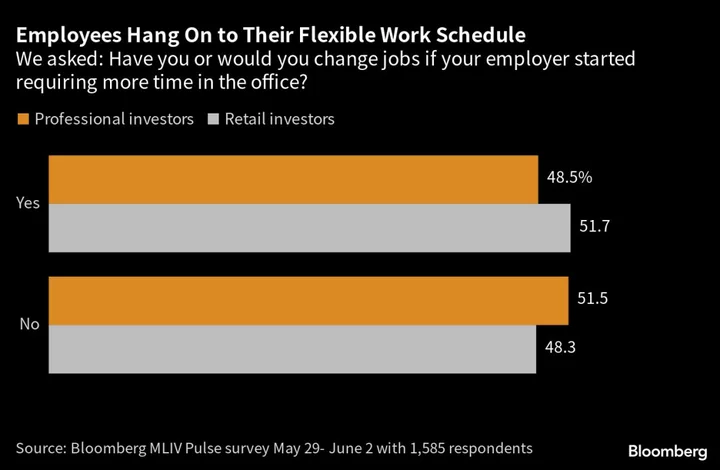
Don’t Ask Us to Come to the Office More — Or We Will Quit, Investors Say
Financial professionals have a warning for their employers: Don't ask me to come in to the office more
2023-06-05 09:29

Flight from Paris to the US diverted to Canada due to an unruly passenger, police say
A disruptive passenger on a Friday flight from Paris, France, to Detroit, Michigan, is facing criminal charges after his behavior caused the plane to be diverted to Canada, police said.
2023-06-05 09:22
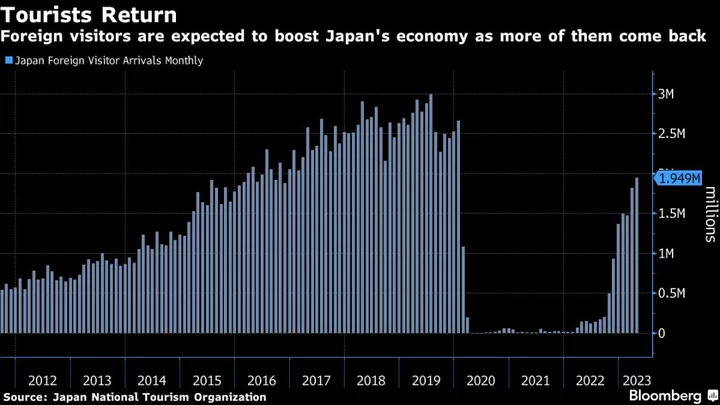
Japan’s Rapid Return of Tourists Helping Fuel Inflation for BOJ
Foreign tourists packing flights to Japan are helping the economy climb out of a recession with spending power
2023-06-05 08:58

Lufthansa Urges Europe to Ease Rules on Consolidation
Deutsche Lufthansa AG is hoping the European Commission will water down its stance on competition as the German
2023-06-05 03:50

Directors Union Reaches Tentative Deal With Hollywood Studios
The Directors Guild of America reached a tentative agreement with the Alliance of Motion Picture and Television Producers,
2023-06-05 02:26

Bitcoin Coders Feud Over Whether to Crush $1 Billion Frenzy for Memecoins
The coders who maintain Bitcoin’s blockchain are clashing over whether to stamp out the meme tokens swarming the
2023-06-04 21:29
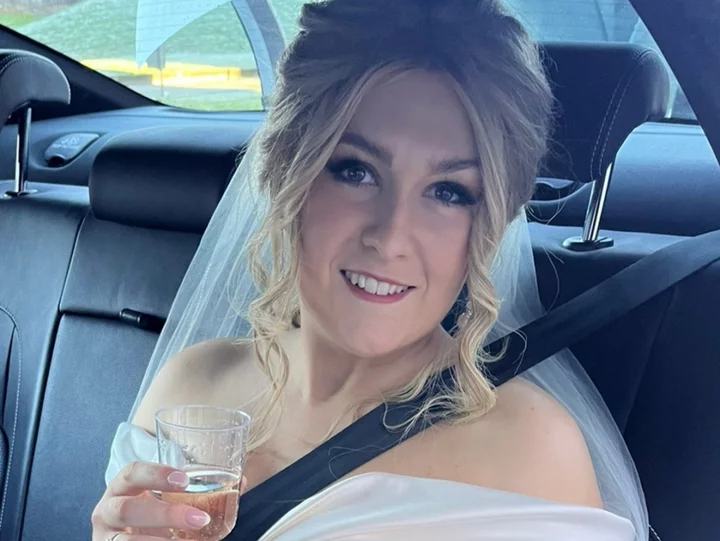
Husband of non-smoker, 24, who died two weeks after lung cancer diagnosis reveals single telltale sign
A young paramedic died from a rare form of lung cancer despite never smoking. Meadhbh Cameron, 24, died on March 11, after being told two days before Christmas that she had weeks to live. She married police officer Lee Cameron shortly before her death, the day after his 27th birthday. Meadhbh first noticed something was wrong in September when she coughed up a blood clot while in hospital as part of her job. Lee says she had an intermittent nighttime cough with no other symptoms, but a scan revealed a shadow on her lung. Four weeks later, Meadhbh was told she had stage 4 combined small cell lung cancer, an extremely aggressive and rare form of cancer, not typically seen in a young, non-smoker in good health. Meadhbh, who worked in Clydebank, West Dunbartonshire, was given chemo but the cancer had spread to bones and lymph nodes, She married Lee at a ceremony carried out by Kenny Gray, a healthcare support worker who worked in the ward in the Beatson West of Scotland Cancer Centre. Lee, who lives in Glasgow, is running the Loch Ness Marathon in October - as it was top of his wife’s bucket list of things she hoped to do. Lee said: “She told me she had coughed up a blood clot while in hospital with a patient and that an x-ray had revealed a shadow in her left lung. “This was totally out of the blue, as she had no other symptoms, other than an intermittent cough at night. “The specialists advised us that Meadhbh’s type of cancer was incurable, however it tended to respond well to chemotherapy. “They informed us that with chemo Meadhbh would likely have a year to live if not more due to her age and health.” Meadhbh received three rounds of chemotherapy but was hospitalised each time with neutropenia, a condition which results in a low number of white blood cells, neutrophils, in blood. Lee said: “On the third time she was hospitalised, we were informed that Meadhbh’s treatment wasn’t working and that the cancer in her spine was compressing her spinal cord. “We were told that she had six to eight weeks to live, on December 23.” Meadhbh passed away the day after Lee’s 27th birthday. Lee added: “Despite the high levels of sedation she was under, Meadhbh still managed to wake up and hum ‘Happy Birthday’ to me. “This was a true testament to Meadhbh’s strength and character. “In the end cancer robbed Meadhbh of everything but her compassion, humour and mental strength. “Meadhbh was an incredibly caring and compassionate soul who had an outstanding passion for life. “Her smile could brighten even the darkest of days and she was the life and soul of the party. “Those traits are what made her an exceptional paramedic, a job that she absolutely loved. “It gives me great honour in being able to call her my wife.” Lee is fundraising for Beatson Cancer Charity, which supported the couple. He added: “The support they provided to my wife and I was second to none, especially with Meadhbh’s prognosis, which unfortunately involved spending her last Christmas in hospital. “The Teenage and Young Adult team arranged for Meadhbh to get a private room so I could stay with her and also provided festive food along with a host of other things, including psychological support. “They even helped Meadhbh and I bring forward our wedding so we could still have our big day, which is something I am incredibly grateful for. “Before passing, she had a bucket list of things she wanted to do and at the top was run a marathon.” Read More A Place In The Sun’s Jonnie Irwin admitted to hospital amid terminal diagnosis New blood test for 50 types of cancer sparks hope of ‘revolutionary’ breakthrough Why the NHS can’t win the battle on treating cancer
2023-06-04 17:20

10 sneaky tricks restaurants use to get customers to buy more
The restaurant industry is ever-evolving and continuously bringing in new changes to menus to suit its demographic. Certain tricks in their menus allow restaurants to subtly nudge customers into enjoying a fuller dining experience, consequently increasing their spending. Sign up for our free Indy100 weekly newsletter To help diners avoid falling for these tricks, an expert at Menu Price lifted the lid on the sneaky tricks that encourage people to spend and consume more: Value menus Restaurants introduce value menus with meals of different price points. The restaurant hopes that it will motivate customers to opt for the priciest range of the value menu, which has more options, or to bypass the value menu entirely due to its limited options. This strategy ultimately translates into increased profitability. "If a restaurant's value menu features items like burgers, pizza, and spaghetti, but your preference leans towards a steak, you'll find yourself ordering the steak at its regular cost, bypassing the value menu. This scenario directly contributes to a higher profit for the restaurant," says a Menu Price expert. Emphasis on certain menu items Restaurants strategically highlight specific dishes, often those with higher profit margins, drawing customer attention to these preferred items through menu placement and design cues. The use of colour Warm hues like red and yellow can trigger hunger, while cooler shades like blue make meals seem more refreshing. Strategically deploying these colours in their menus helps restaurants subtly sway customer choices. Photographs used sparingly To maintain a sophisticated aesthetic, restaurants use photographs sparingly, only emphasising selected dishes, making them more appealing to the eye and tastebuds alike. Descriptive language Vivid descriptions of dishes can create a compelling image in customers' minds, making the menu items more appealing and increasing the likelihood of ordering. Avoiding currency symbols Menus without currency symbols can encourage higher spending, as prices appear less intimidating. "Keep a close eye on prices, even when restaurants fail to integrate dollar signs. This can help you avoid paying more than you want for a meal," the expert said. Anchor items Restaurants place some of their most expensive items next to even more costly options. The Menu Price expert added: "When customers see a pricey dish positioned next to an even more expensive option, they are more likely to perceive the less costly of the two as a 'better deal." Use of boxes Boxes and borders draw attention to specific items, creating a visual 'stage' that makes these dishes stand out. "This technique is often applied to high-profit items, specials, or unique offerings," they said. Keeping portion sizes secret Restaurants offer full or half salads or sandwiches without revealing the portion sizes. Despite any clear explanation, consumers assume that half sizes are overpriced and the full size is more cost-effective. "Customers perceive they are getting a better deal without even knowing the real serving size of the food options." Difficult-to-read font Using complex fonts in menus can slow customers' reading, promoting more profound engagement with dish descriptions. This added interaction can enhance dishes' perceived worth and exclusivity, thereby subtly inspiring a readiness to spend more. Remain vigilant during your next dining experience and see how many of these subtle tricks you can spot and how much money you can save on your meal. Have your say in our news democracy. Click the upvote icon at the top of the page to help raise this article through the indy100 rankings.
2023-06-04 14:26

Slow start to New York's legal pot market leaves farmers holding the bag
New York's fledgling marijuana market doesn't have enough licensed retailers to sell the 300,000 pounds (136,000 kilograms) of cannabis grown by farmers in the state
2023-06-04 12:53
